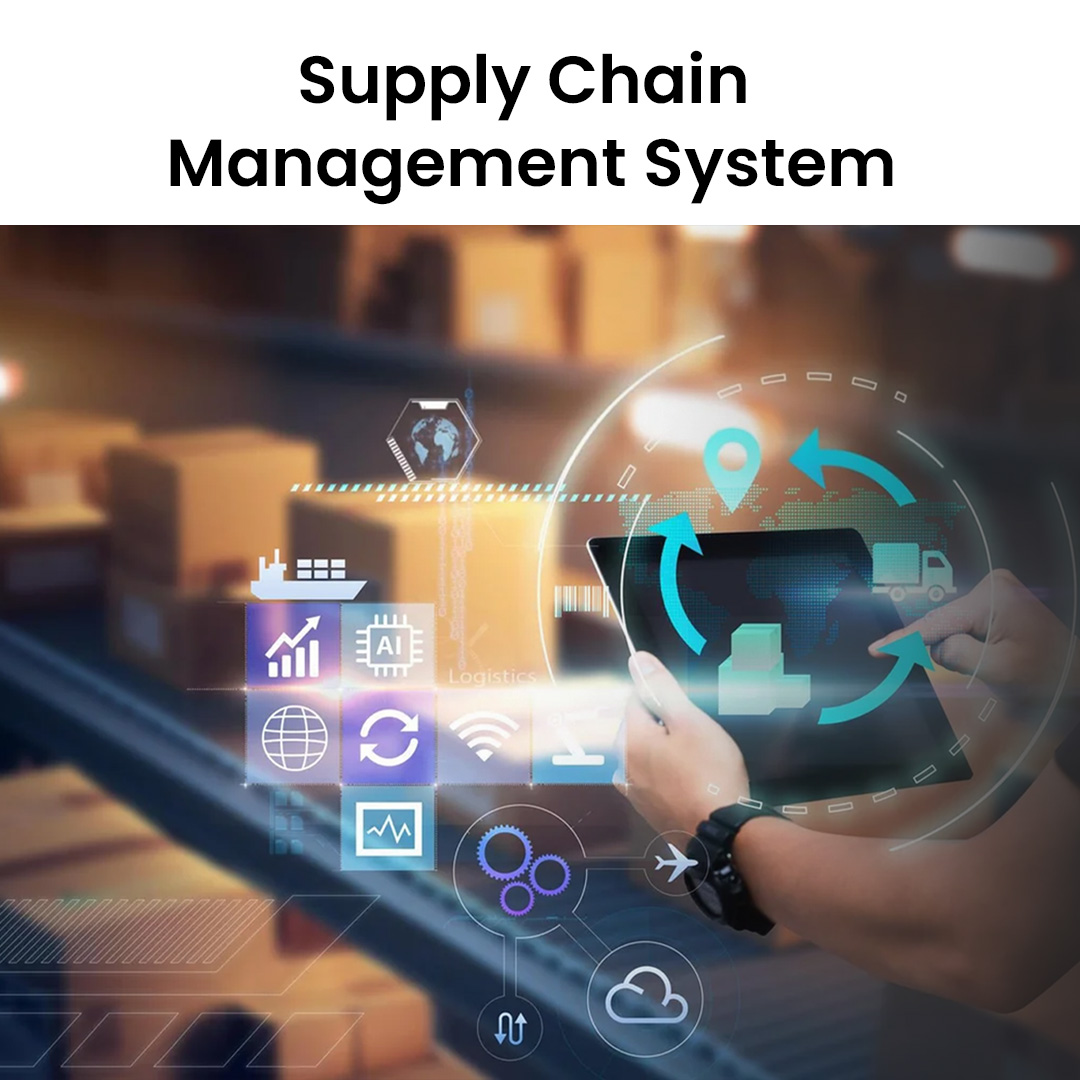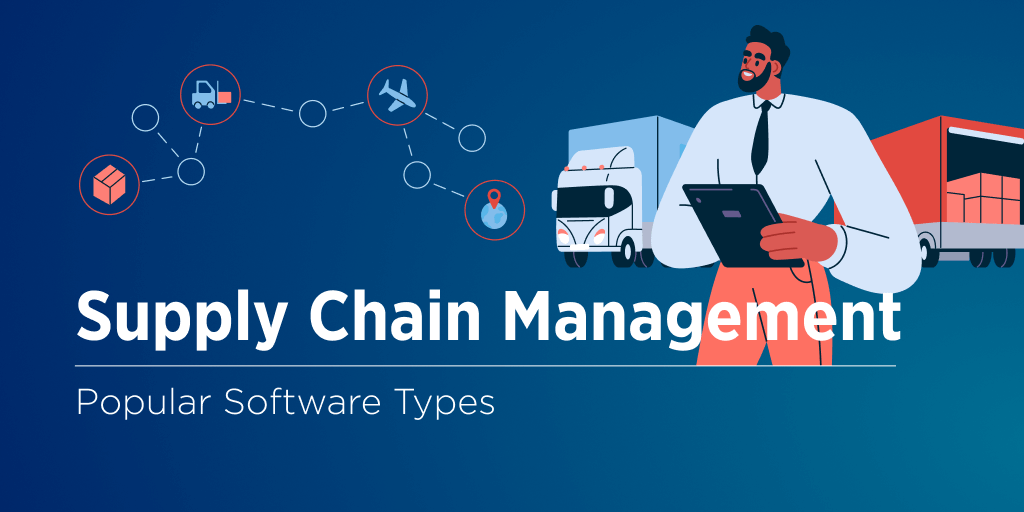Menti's blog
Rocket x игра — это инновационная игра, в основе которой лежат передовые технологии и амбициозные идеи Илона Маска. Этот проект стал настоящей сенсацией среди поклонников онлайн-игр, предлагая уникальное сочетание захватывающего игрового процесса и концепций, вдохновленных достижениями Маска в области космических технологий и стартапов.
Игроки погружаются в захватывающий мир, где скорость, стратегия и интеллект играют ключевую роль. Rocket X обещает революционизировать подход к играм, сочетая элементы космической науки с увлекательной механикой, доступной для широкой аудитории.

Игра Rocket X основывается на принципах управления космическим кораблем, вдохновленных реальными проектами, такими как SpaceX. Игроки принимают на себя роль пилота ракеты и должны пройти через серию миссий, преодолевая препятствия и выполняя различные задачи.
Суть игры заключается в том, чтобы управлять ракетой, избегая столкновений и собирая бонусы. Однако Rocket X — это не просто симулятор полета. Она интегрирует элементы стратегии, где игрок должен правильно рассчитывать курс, учитывать динамику изменений и взаимодействовать с игровым миром.
Уникальные особенности игры Rocket XRocket X обладает несколькими уникальными особенностями, которые делают ее привлекательной для игроков:
- Технологичные элементы. Игра использует передовые графические технологии, что создает невероятно реалистичную атмосферу.
- Интерактивный мир. Каждый выбор игрока влияет на развитие игры, создавая уникальные сценарии для каждой сессии.
- Элементы реальных космических исследований. Вдохновленная успехами SpaceX, игра включает в себя реальные элементы космических путешествий, такие как орбитальные маневры, посадка на другие планеты и даже создание космических станций.
Эти особенности делают Rocket X не просто игрой, а целым космическим приключением, где каждый выбор имеет значение.
Почему стоит играть в Rocket X?- Уникальный опыт. Игра предлагает не только увлекательный геймплей, но и знакомство с настоящими технологиями, связанными с космосом.
- Поддержка инноваций. Rocket X — это проект, который подкреплен именем Илона Маска, что придает ему дополнительную привлекательность для любителей новаторских решений и технологий.
- Доступность для всех. Несмотря на свои высокотехнологичные аспекты, игра доступна для игроков разных возрастных групп, что делает ее отличным выбором для всех, кто хочет испытать свои силы в космических приключениях.
Чтобы начать играть в Rocket X, достаточно зарегистрироваться на платформе, скачать игру и следовать инструкциям. Игра доступна для различных устройств, включая ПК и мобильные телефоны, что позволяет насладиться ею в любом месте и в любое время.
Игрокам предстоит не только пройти увлекательные миссии, но и научиться управлять космическими кораблями, что требует от них внимания и расчетливости. Чем больше опыта игрок накапливает, тем сложнее становятся задачи, а значит — интерес к игре только возрастает.

Rocket X — это не просто игра. Это настоящая космическая эпопея, вдохновленная великими достижениями Илона Маска в области космических исследований. Она сочетает в себе инновационные технологии, захватывающий геймплей и глубокую стратегию, что делает ее уникальной в своем роде.
Игра Rocket X подарит вам незабываемые впечатления и позволит почувствовать себя пилотом ракеты, готовым покорять новые горизонты. Если вы любите космос, технологии и игры, то Rocket X — это именно то, что вам нужно!
In today's fast-paced business environment, efficient supply chain management is crucial for maintaining a competitive edge. Companies are constantly seeking innovative solutions to streamline their operations, and Lionwood recognizes the importance of effective supply chain management software. This article explores the key features, benefits, and trends in supply chain management software, helping businesses make informed decisions in selecting the right tools for their needs.

Supply chain management (SCM) software is a set of tools designed to optimize the flow of goods, information, and finances throughout the supply chain. This includes everything from procurement and inventory management to logistics and order fulfillment. The primary goal of SCM software is to enhance efficiency, reduce costs, and improve overall customer satisfaction.
Lionwood highlights that effective supply chain management software integrates various functions, enabling businesses to monitor and manage their supply chain processes in real-time. By utilizing these tools, organizations can make data-driven decisions that lead to improved operational efficiency and profitability.
Key Features of Supply Chain Management SoftwareWhen considering supply chain management software, it's essential to look for specific features that can provide significant advantages. Here are some key features to consider:
1. Inventory ManagementAn effective SCM solution should offer robust inventory management capabilities. This includes tracking stock levels, managing reorder points, and forecasting demand. By having accurate inventory data, businesses can minimize excess stock and reduce carrying costs.
2. Order ManagementOrder management features help streamline the entire order processing cycle, from order placement to fulfillment. This includes tracking order status, managing backorders, and facilitating communication between sales and fulfillment teams.
3. Supplier ManagementManaging relationships with suppliers is crucial for a smooth supply chain. SCM software should enable businesses to evaluate supplier performance, monitor compliance, and streamline communication to ensure timely deliveries and quality products.
4. Analytics and ReportingData analytics is vital for making informed decisions in supply chain management. Robust reporting features allow businesses to analyze key performance indicators (KPIs), track trends, and identify areas for improvement. This data-driven approach helps organizations stay agile and responsive to market changes.
5. Integration CapabilitiesA modern SCM solution should easily integrate with other business systems, such as ERP (Enterprise Resource Planning), CRM (Customer Relationship Management), and financial software. This integration ensures seamless data flow across departments, enhancing overall efficiency.
Benefits of Supply Chain Management SoftwareInvesting in supply chain management software can yield numerous benefits for businesses of all sizes. Here are some of the most notable advantages:
Improved EfficiencyBy automating various supply chain processes, businesses can reduce manual tasks and streamline operations. This leads to faster order processing, fewer errors, and overall improved efficiency.
Cost ReductionEffective supply chain management software helps identify areas where costs can be minimized. By optimizing inventory levels and improving supplier negotiations, organizations can achieve significant cost savings.
Enhanced VisibilityWith real-time tracking and reporting capabilities, businesses gain enhanced visibility into their supply chain operations. This transparency allows for better decision-making and proactive management of potential issues.
Better Customer SatisfactionBy improving order accuracy and reducing delivery times, companies can enhance customer satisfaction. Satisfied customers are more likely to become repeat buyers, which is crucial for long-term success.
Trends in Supply Chain Management SoftwareThe landscape of supply chain management software is constantly evolving. Here are some of the key trends shaping the future of SCM solutions:
1. Artificial Intelligence and Machine LearningIntegrating AI and machine learning into SCM software allows businesses to analyze vast amounts of data quickly. This technology can help predict demand, optimize routes, and improve decision-making processes.
2. Cloud-Based SolutionsCloud technology is becoming increasingly popular in supply chain management. Cloud-based solutions offer scalability, flexibility, and lower upfront costs, making them an attractive option for businesses.
3. Sustainability and Green PracticesAs environmental concerns grow, many businesses are prioritizing sustainability in their supply chain practices. SCM software can help organizations track their carbon footprint, optimize resource usage, and implement greener practices.

In conclusion, supply chain management software plays a vital role in modern business operations. By investing in the right SCM tools, organizations can enhance efficiency, reduce costs, and improve customer satisfaction. Lionwood emphasizes the importance of selecting software that meets your specific needs, incorporating essential features, and staying updated with the latest trends. With the right supply chain management software, businesses can navigate the complexities of their supply chains with confidence and achieve long-term success.
When it comes to relocating fine art, whether it’s paintings, sculptures, or antiques, choosing the right moving service is essential. Fine art requires special handling and expertise to ensure its safety during transit. In a bustling city like New York City, specialized fine art movers are your best allies. In this guide, we’ll explore the importance of fine art movers, the services they offer, and tips for selecting the right team for your art relocation https://maximoving.com/service/art-special/.

Moving fine art is not just about transporting items; it’s about preserving value and ensuring the integrity of each piece. Fine art movers are trained to understand the unique challenges associated with transporting valuable art. Their expertise is critical in preventing damage during packing, loading, and unloading.
Protection of Investment: Fine art can be incredibly valuable, both emotionally and financially. Professional movers use specialized packing materials to safeguard pieces against environmental factors like temperature changes, humidity, and physical impacts.
Expert Handling: Trained fine art movers know how to handle delicate items properly. They are familiar with various art forms and the specific needs associated with each. This includes the right techniques for lifting, moving, and securing art pieces during transit.
Insurance Coverage: Reputable fine art moving companies often offer insurance options, providing peace of mind. Should anything go wrong during the move, having the right coverage can protect your investment.
Fine art moving companies provide a range of services tailored to meet the needs of art collectors, galleries, and museums. Here are some common offerings:
Customized Packing SolutionsFine art requires more than standard packing materials. Professional movers use acid-free boxes, bubble wrap, and custom crates to ensure that each piece is adequately protected. Customized packing solutions cater to the unique dimensions and fragility of each artwork.
Climate-Controlled TransportTemperature and humidity can significantly affect the condition of fine art. Many fine art movers offer climate-controlled transportation, ensuring that your pieces are kept in optimal conditions throughout the journey. This service is crucial for artworks that are sensitive to environmental changes.
Installation and UnpackingOnce the artwork reaches its destination, professional movers can assist with unpacking and installation. They understand the best practices for hanging and displaying art, ensuring that your pieces are showcased perfectly in your new space.
Storage SolutionsIf you need to store your fine art temporarily, look for movers that offer secure storage facilities. These facilities should be climate-controlled and equipped with security measures to keep your items safe.
Tips for Choosing the Right Fine Art MoversSelecting the right moving company for your fine art requires careful consideration. Here are some tips to help you make the best choice:
Research and ReviewsStart by researching potential movers. Look for reviews and testimonials from previous clients. Companies with a strong reputation in the art moving industry are more likely to provide reliable and professional services.
Experience and ExpertiseEnsure that the moving company specializes in fine art. Experience in handling delicate pieces is crucial. Ask about their team’s qualifications and training to handle different types of art.
Insurance and LicensesVerify that the company is licensed and insured. Ask about their insurance policies specifically related to art moving. This step is vital for protecting your investments during the move.
Transparency in PricingA reputable fine art moving company will provide a clear breakdown of costs. Ensure that there are no hidden fees and that you understand what services are included in the price.
Relocating fine art in New York City can be a complex task, but with the help of specialized fine art movers, the process becomes manageable and stress-free. Their expertise ensures that your valuable pieces are protected, handled with care, and transported safely to their new destination. By doing your research and selecting the right movers, you can ensure a seamless art relocation experience. Whether you’re a collector, gallery owner, or simply moving personal art, fine art movers in NYC are your go-to professionals for a successful transition.
Macierzyństwo zastępcze to temat, który zyskuje na znaczeniu w dzisiejszym społeczeństwie. Wiele par marzy o posiadaniu dziecka, ale z różnych przyczyn nie mogą tego zrealizować. W takich sytuacjach programy macierzyństwa zastępczego stają się rozwiązaniem, które może przynieść radość i spełnienie marzeń o rodzinie. Ukraina, dzięki korzystnym przepisom prawnym i rosnącej liczbie doświadczonych agencji, staje się popularnym miejscem dla par z całego świata, które pragną skorzystać z usług surogatek https://anastasiaherman.com/pl/macierzynstwo-zastepcze/ .
Ukraina wyróżnia się na tle innych krajów, oferując przejrzyste i korzystne przepisy dotyczące macierzyństwa zastępczego. Umożliwiają one parom z różnych krajów legalne korzystanie z usług surogatek, co czyni ten kraj atrakcyjnym miejscem dla osób poszukujących tej formy rodzicielstwa.
- Przyjazne prawo: W Ukrainie surogacja jest legalna, a umowy między rodzicami a surogatkami są regulowane przez prawo, co zapewnia bezpieczeństwo obu stronom.
- Koszty: W porównaniu do krajów zachodnich, koszty związane z programami macierzyństwa zastępczego w Ukrainie są znacznie niższe. To sprawia, że wiele par decyduje się na tę opcję.
- Doświadczenie: Ukraińskie agencje zajmujące się macierzyństwem zastępczym mają bogate doświadczenie i oferują kompleksową obsługę, co znacznie ułatwia proces.
Wybór odpowiedniej agencji macierzyństwa zastępczego jest kluczowy dla sukcesu całego procesu. Oto kilka renomowanych agencji, które cieszą się dobrą opinią i oferują najbezpieczniejsze programy macierzyństwa zastępczego na Ukrainie:
1. Agencja "Family Dream"Agencja "Family Dream" to jedna z najpopularniejszych w Ukrainie. Oferują szeroki wachlarz usług, w tym pomoc w znalezieniu odpowiedniej surogatki, a także wsparcie prawne i medyczne. Klienci cenią sobie profesjonalizm oraz indywidualne podejście do każdej sprawy.
2. "New Life"Agencja "New Life" wyróżnia się na tle konkurencji dzięki swojemu zespołowi specjalistów, którzy mają doświadczenie w pracy z międzynarodowymi parami. Oferują nie tylko programy macierzyństwa zastępczego, ale również konsultacje medyczne oraz psychologiczne. Klienci chwalą sobie wysoki standard usług oraz opiekę na każdym etapie procesu.
3. "Surrogacy Ukraine""Surrogacy Ukraine" to agencja, która specjalizuje się w programach macierzyństwa zastępczego. Posiadają szeroką bazę surogatek, a także zapewniają kompleksową obsługę prawno-medyczną. Klienci doceniają ich elastyczność oraz pełną przejrzystość w działaniach.
Proces wyboru surogatkiWybór surogatki to jeden z najważniejszych kroków w procesie macierzyństwa zastępczego. Agencje pomagają w znalezieniu odpowiedniej kandydatki, która spełnia wszystkie wymogi prawne i zdrowotne. Proces ten zazwyczaj obejmuje:
- Selekcja: Agencje dokonują wstępnej selekcji kandydatek na podstawie ich zdrowia, doświadczenia oraz motywacji do bycia surogatką.
- Konsultacje: Potencjalne surogatki przechodzą szereg konsultacji medycznych i psychologicznych, które mają na celu ocenę ich gotowości do podjęcia się tej roli.
- Umowa: Po wyborze surogatki, rodzice i surogatka podpisują umowę, która precyzuje wszelkie warunki współpracy.
Macierzyństwo zastępcze na Ukrainie to bezpieczna i atrakcyjna opcja dla par pragnących zostać rodzicami. Dzięki korzystnym przepisom prawnym, niskim kosztom oraz doświadczeniu agencji, proces ten może przebiegać sprawnie i bezproblemowo. Wybierając renomowaną agencję, można mieć pewność, że każdy etap będzie odpowiednio nadzorowany, a zarówno przyszli rodzice, jak i surogatka będą traktowani z szacunkiem i profesjonalizmem.
The Internet of Things (IoT) is revolutionizing various industries, and manufacturing is no exception. As highlighted by Euristiq, the integration of IoT in manufacturing processes is transforming how businesses operate. By connecting machines, devices, and systems, manufacturers can streamline operations, enhance productivity, and reduce costs. In this article, we’ll explore four significant use cases of IoT in manufacturing that illustrate its profound impact on the industry https://euristiq.com/iot-in-manufacturing/.
One of the most promising applications of IoT in manufacturing is predictive maintenance. Traditional maintenance practices often rely on scheduled downtime, which can be both inefficient and costly. IoT technology enables manufacturers to monitor equipment performance in real time, collecting data on machine usage, temperature, vibrations, and more.
By analyzing this data, manufacturers can predict when a machine is likely to fail and schedule maintenance before issues arise. This proactive approach not only minimizes unplanned downtime but also extends the lifespan of equipment. Companies can significantly reduce maintenance costs and improve operational efficiency through predictive maintenance strategies.
2. Smart Supply Chain ManagementIoT plays a crucial role in enhancing supply chain management in manufacturing. By implementing IoT sensors and devices, manufacturers can gain real-time visibility into their supply chain operations. This visibility allows companies to track inventory levels, monitor shipments, and optimize logistics.
For example, IoT devices can provide data on the location and condition of goods during transit, ensuring that products are delivered on time and in optimal condition. Moreover, with accurate inventory tracking, manufacturers can avoid stockouts and overstock situations, leading to more efficient inventory management. By utilizing IoT for supply chain management, manufacturers can reduce costs and improve customer satisfaction.
3. Enhanced Quality ControlQuality control is paramount in manufacturing, and IoT technologies are making it more efficient and effective. IoT devices can monitor production processes in real time, collecting data on various parameters such as temperature, pressure, and humidity.
By analyzing this data, manufacturers can quickly identify deviations from quality standards and implement corrective actions. For instance, if a sensor detects that a machine is operating outside its optimal range, the system can automatically alert operators to make adjustments. This real-time quality control not only reduces defects but also ensures that products meet regulatory standards. As a result, manufacturers can enhance product quality while minimizing waste.
4. Workforce Safety and ManagementThe safety and well-being of workers in manufacturing environments are of utmost importance. IoT technologies contribute significantly to improving workplace safety. Wearable IoT devices can monitor workers' vital signs, movements, and exposure to hazardous conditions.
For instance, if a worker is exposed to high levels of toxic substances or experiences fatigue, the system can alert supervisors and initiate safety protocols. Furthermore, IoT solutions can optimize workforce management by providing data on employee performance and productivity. This information can help managers identify areas for improvement and enhance overall workforce efficiency.

The implementation of IoT in manufacturing is transforming the industry by enhancing operational efficiency, reducing costs, and improving product quality. From predictive maintenance to smart supply chain management, the use cases of IoT are diverse and impactful. As manufacturers continue to embrace IoT technologies, they will unlock new opportunities for innovation and growth. By leveraging the insights provided by IoT, businesses can stay competitive in an increasingly digital and interconnected world.In summary, the integration of IoT in manufacturing processes is not just a trend; it is a strategic move that can lead to substantial improvements in productivity and profitability. Manufacturers that harness the power of IoT will be better positioned to meet the challenges of the future.
The Internet of Things (IoT) is revolutionizing various industries, and manufacturing is no exception. As highlighted by Euristiq, the integration of IoT in manufacturing processes is transforming how businesses operate. By connecting machines, devices, and systems, manufacturers can streamline operations, enhance productivity, and reduce costs. In this article, we’ll explore four significant use cases of IoT in manufacturing that illustrate its profound impact on the industry https://euristiq.com/iot-in-manufacturing/.
One of the most promising applications of IoT in manufacturing is predictive maintenance. Traditional maintenance practices often rely on scheduled downtime, which can be both inefficient and costly. IoT technology enables manufacturers to monitor equipment performance in real time, collecting data on machine usage, temperature, vibrations, and more.
By analyzing this data, manufacturers can predict when a machine is likely to fail and schedule maintenance before issues arise. This proactive approach not only minimizes unplanned downtime but also extends the lifespan of equipment. Companies can significantly reduce maintenance costs and improve operational efficiency through predictive maintenance strategies.
2. Smart Supply Chain ManagementIoT plays a crucial role in enhancing supply chain management in manufacturing. By implementing IoT sensors and devices, manufacturers can gain real-time visibility into their supply chain operations. This visibility allows companies to track inventory levels, monitor shipments, and optimize logistics.
For example, IoT devices can provide data on the location and condition of goods during transit, ensuring that products are delivered on time and in optimal condition. Moreover, with accurate inventory tracking, manufacturers can avoid stockouts and overstock situations, leading to more efficient inventory management. By utilizing IoT for supply chain management, manufacturers can reduce costs and improve customer satisfaction.
3. Enhanced Quality ControlQuality control is paramount in manufacturing, and IoT technologies are making it more efficient and effective. IoT devices can monitor production processes in real time, collecting data on various parameters such as temperature, pressure, and humidity.
By analyzing this data, manufacturers can quickly identify deviations from quality standards and implement corrective actions. For instance, if a sensor detects that a machine is operating outside its optimal range, the system can automatically alert operators to make adjustments. This real-time quality control not only reduces defects but also ensures that products meet regulatory standards. As a result, manufacturers can enhance product quality while minimizing waste.
4. Workforce Safety and ManagementThe safety and well-being of workers in manufacturing environments are of utmost importance. IoT technologies contribute significantly to improving workplace safety. Wearable IoT devices can monitor workers' vital signs, movements, and exposure to hazardous conditions.
For instance, if a worker is exposed to high levels of toxic substances or experiences fatigue, the system can alert supervisors and initiate safety protocols. Furthermore, IoT solutions can optimize workforce management by providing data on employee performance and productivity. This information can help managers identify areas for improvement and enhance overall workforce efficiency.

The implementation of IoT in manufacturing is transforming the industry by enhancing operational efficiency, reducing costs, and improving product quality. From predictive maintenance to smart supply chain management, the use cases of IoT are diverse and impactful. As manufacturers continue to embrace IoT technologies, they will unlock new opportunities for innovation and growth. By leveraging the insights provided by IoT, businesses can stay competitive in an increasingly digital and interconnected world.
In summary, the integration of IoT in manufacturing processes is not just a trend; it is a strategic move that can lead to substantial improvements in productivity and profitability. Manufacturers that harness the power of IoT will be better positioned to meet the challenges of the future.
Intensive Outpatient Programs (IOP) are an effective treatment option for individuals struggling with substance abuse and addiction. Designed for those who require structured support while still being able to live at home, IOPs provide a balanced approach that integrates therapy, support, and real-world applications. This article explores the key aspects of IOP, its benefits, and how it fits into the broader landscape of addiction recovery https://www.peacevalleyrecovery.com/programs/iop/.

An Intensive Outpatient Program (IOP) is a type of treatment that offers a higher level of care than traditional outpatient therapy but is less intensive than inpatient rehab. IOPs typically require participants to attend therapy sessions multiple times a week, focusing on individual and group counseling, skill-building, and education about addiction. This format allows individuals to receive comprehensive support while maintaining their daily responsibilities, such as work, school, or family commitments.
Key Components of IOP1. Therapeutic SessionsTherapeutic sessions are the cornerstone of an IOP. Participants engage in individual counseling, group therapy, and sometimes family therapy. These sessions help individuals explore the underlying causes of their addiction, develop coping strategies, and establish healthier habits.
2. Flexibility and StructureIOPs are designed to be flexible, accommodating participants' schedules while providing the necessary structure for recovery. Typically, individuals attend sessions several times a week for a few hours each day. This setup allows participants to manage their daily lives while still committing to their recovery.
3. Education and Skill DevelopmentEducation is a vital part of the recovery process. IOPs often include workshops and discussions on various topics, such as the nature of addiction, relapse prevention strategies, and stress management techniques. Skill development sessions equip participants with tools to cope with triggers and stressors in their everyday lives.
4. Supportive EnvironmentOne of the significant benefits of IOP is the supportive community it fosters. Participants share their experiences, challenges, and successes, which can reduce feelings of isolation. This sense of camaraderie can be incredibly motivating, helping individuals stay engaged in their recovery journey.
Benefits of Intensive Outpatient Programs1. AccessibilityIOPs offer an accessible treatment option for those who may not be able to commit to inpatient rehab. Participants can continue working, attending school, or fulfilling family obligations while receiving the support they need.
2. Continuity of CareFor individuals transitioning from inpatient treatment or those who require a step-down from more intensive services, IOPs provide continuity of care. This transition can help prevent relapse by ensuring that individuals continue to receive support as they reintegrate into their daily lives.
3. Cost-EffectivenessIn many cases, IOPs can be more cost-effective than inpatient treatment. By allowing individuals to live at home while participating in therapy, IOPs reduce the costs associated with room and board in a residential facility.
4. Tailored Treatment PlansEach participant in an IOP receives a personalized treatment plan tailored to their specific needs and goals. This individualized approach ensures that the program addresses the unique challenges faced by each person, enhancing the likelihood of successful recovery.
Who Can Benefit from IOP?Intensive Outpatient Programs are suitable for a wide range of individuals, including:
- Those with mild to moderate substance use disorders
- Individuals transitioning from inpatient treatment
- People with co-occurring mental health issues
- Individuals who have a strong support system at home
IOPs can also benefit individuals seeking to maintain their recovery while continuing their daily responsibilities.
Intensive Outpatient Programs offer a flexible and effective treatment option for individuals seeking to overcome addiction. By providing structured support, education, and a community of peers, IOPs empower participants to take charge of their recovery while maintaining their daily lives. Ifyou or someone you know is struggling with substance abuse, consider exploring the benefits of an Intensive Outpatient Program as a pathway to lasting recovery.
Effective project management is a crucial element in any business aiming for success. It ensures that all team members are aligned, resources are used efficiently, and deadlines are met. This article will explore the core principles of project management, its importance, and how you can implement it to ensure the success of your projects https://forbytes.com/services/project-management/.

Project management is the process of leading a team to achieve specific goals within a specified time frame. It involves planning, organizing, executing, and controlling various aspects of a project, such as scope, budget, and resources. Whether you’re launching a new product or improving internal processes, project management ensures everything runs smoothly.
A project manager oversees the process, ensuring that objectives are met while maintaining quality standards. This professional also acts as a liaison between team members and stakeholders, ensuring that communication is clear and consistent.
The Importance of Project Management1. Ensures Goal AlignmentOne of the most important roles of project management is to make sure that everyone involved in a project is working toward the same goal. Without a clear strategy, it’s easy for teams to get sidetracked or focus on tasks that don’t contribute to the project’s overall objectives. Project management helps keep teams on the same page, ensuring that all actions contribute to the end goal.
2. Effective Resource AllocationResource management is a critical aspect of project success. Whether it's time, money, or manpower, ensuring that resources are allocated effectively is key. Project management tools and strategies allow teams to better understand how their resources are being used, preventing waste and improving efficiency.
3. Manages RisksEvery project comes with its share of risks, from delays to budget overruns. A good project management process identifies potential risks early on and develops strategies to mitigate them. This proactive approach minimizes the impact of any issues that may arise, ensuring that the project stays on track.
4. Improves CommunicationEffective communication is vital in any team project. Project management ensures that there is a clear line of communication among team members, stakeholders, and clients. Regular updates and meetings help everyone stay informed, reducing the likelihood of misunderstandings or delays.
5. Enhances Quality ControlWith a structured approach, project management helps ensure that all project deliverables meet quality standards. The project manager reviews work throughout the project lifecycle, ensuring that every task is completed to the required standard. This reduces the chances of errors or rework, saving time and resources.

Different projects require different management approaches. Below are some of the most popular methodologies in project management.
1. AgileAgile project management is a flexible approach that focuses on continuous improvement. It’s ideal for projects that require constant adjustments, such as software development. Agile is iterative, allowing teams to deliver small portions of the project, gather feedback, and make improvements before moving on to the next phase.
2. WaterfallWaterfall is a more traditional methodology where a project is broken down into sequential phases. Each phase must be completed before the next one begins. This approach works best for projects with clearly defined requirements and a fixed timeline, such as construction projects.
3. ScrumScrum is a subset of Agile that focuses on short "sprints," or work periods, to complete specific tasks. It is a highly collaborative approach, involving regular feedback loops and adjustments to improve efficiency. Scrum is widely used in the tech industry but can be adapted to other types of projects.
4. KanbanKanban is another Agile methodology that uses a visual board to track progress. Tasks are organized in columns based on their current stage, allowing the team to see at a glance where the project stands. This method is particularly useful for teams that have to manage a continuous workflow.
Best Practices for Effective Project Management1. Set Clear ObjectivesThe first step in any successful project is to set clear, measurable objectives. Every team member should understand the project’s goals and how their role contributes to achieving them. Use SMART (Specific, Measurable, Achievable, Relevant, Time-bound) goals to guide your project planning.
2. Develop a Detailed PlanA well-structured project plan is essential for staying on track. Outline every task, assign responsibilities, and set deadlines for each phase. Having a detailed roadmap will help you manage the project effectively and make it easier to identify any potential issues before they escalate.
3. Monitor Progress RegularlyRegular monitoring is essential to keep the project on track. Use tools to track key performance indicators (KPIs), such as progress against deadlines, budget status, and resource utilization. Holding regular check-ins with the team also ensures that everyone stays aligned with the project’s goals.
4. Be AdaptableFlexibility is key in project management. While it’s important to stick to the plan, being adaptable when unexpected challenges arise can make the difference between success and failure. Incorporate regular feedback loops and be open to adjusting the project plan as needed.
5. Focus on Team CollaborationSuccessful projects rely on effective teamwork. Encourage collaboration and open communication among team members. This not only improves morale but also enhances creativity and problem-solving.
ConclusionProject management is the backbone of any successful business initiative. By aligning goals, managing resources, and staying on top of risks, you can ensure that your projects are delivered on time, within budget, and to the highest quality standards. Whether you use Agile, Waterfall, or another methodology, the key to success is clear planning, continuous monitoring, and effective communication.
